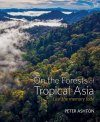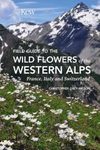By
Gehan de Silva Wijeyeratne
1 Nov 2020
Written for Hardback
I had the privilege of growing up in Sri Lanka which has tall dipterocarp forests and by the age of fifteen I had acquired a love for rainforests. Over the years I have visited many rainforests in South and South East Asia and collected a number of books on rainforests. The title of this book may suggest it is an autobiographical account, the sort of semi-travelogue type of book that can be read during a weekend. On the contrary, this is one of the most sweeping books published on the ecology of rainforests. It is probably the best book on Asian rainforests for its depth and breadth. It is not a weekend read; it is for a lifetime of reference and uncovering nuggets of information. Whether it is someone undertaking postgraduate studies in a tropical rainforest or someone with a deep interest in the natural history of rainforests, this book will be a standard reference.
The book is in the mould of the classic
The Tropical Rainforest: An Ecological Study by P.W. Richards. Other fine books which provide a good introduction, albeit with a strong academic bent include
An Introduction to Tropical Rain Forests and
Tropical Rainforests of the Far East by T.C. Whitmore. There are also many useful compilations of academic papers such as
La Selva: Ecology and Natural History of a Neotropcal Rainforest edited by Lucinda A. McDade
et al. and
Foundations of Tropical Forest Biology: Classic Papers with Commentaries edited by Robin L. Chazdon and T.C. Whitmore. These are all books I dip into for pleasure and inspiration when I am in my apartment in London and dreaming of rainforests. But there has not been a book until this one which was so all-encompassing in its breadth and drawing so heavily for its source material from Asian rainforests and providing an overview of Asian rainforests across political boundaries. In his preface, the author explains ‘No comparative account of the forests throughout tropical Asia has previously been attempted, therefore no opportunity to explain how their diversity has arisen, nor how it functions’.
It is a very important publication for the Asian region, distilling key facts from over two thousand published papers and will undoubtedly be a key reference to botanists, foresters and any biologist working in these rainforests.
The text is scientifically rigorous but has been very cleverly shifted towards a more accessible style by cross-referencing papers with a numbered superscript which is small and non-intrusive. Therefore, the text is visually comfortable, almost in a popular book or magazine-style without the constant interruption of bracketed citations which characterise a scientific paper or book. The end of each chapter has a shaded text box which has an abbreviated citation with just the author’s surname and year, in small font. The full reference can then be looked up in the extensive references on pages 602 to 641. This is a very clever way of rendering much of the book as something that is visually comfortable to a readership who are serious enthusiasts of natural history rather than academics. However, there is no getting away from an academic flavour as paradoxically multilevel numbering has been adopted for the paragraphs. Furthermore, the book is replete with tables and graphs. However, this is tempered with an overall coffee-table shape and book design, generous use of colour photographs, beautifully produced diagrams and figures which work together with accessible text in the main to make it a book that can be enjoyed by anyone with a deep interest in natural history.
It is a work which in some aspects represents an encyclopaedic survey of key literature published on tropical rainforests. But it rarely feels like a mere scientific compendium as it is written from a personal viewpoint and the author’s voice often comes through with numerous references to the work by him or people known to him. Very specialist technical terms are avoided and even terms such as Monoecy which would be familiar to even a beginner botanist is explained in the body of the text in what the author describes as his essays. The end result is text that is densely packed with information, but with much of it accessible to non-specialists who can pleasurably browse much of the book. Six pages of glossary in the end sections will help the reader to tell apart an Ali Baba from Allopatry.
This large-format book of 670 pages could easily be broken down into two books with the first four chapters (pages 13 to 307) being a slimmer book which is a general introduction to Asian rainforests. The first three chapters are an essential read for anyone going out to Asian rainforests for biological fieldwork as they provide such a useful introduction to the physical geography and the ecology and function of Asian rainforests. For someone who is a keen wildlife tourist or a birding tour leader, I would strongly recommend the first two chapters. If a wildlife tour leader has a deep interest in all-round natural history, I would add chapter 3 to the mix. That is a hefty 238 pages. Chapters 1 and 2 are titled ‘Tropical Asia as a special case: the physical environment’ and ‘Lowland forest form and function: reconciling light and drought’ respectively. However, the chapter headings do not adequately convey what a brilliant introduction these two chapters are to Asia. The third chapter titled ‘Patterns of species composition in Asian tropical lowlands forests’ and the fourth chapter titled ‘The mountain forests: abode of clouds’ will admittedly require interest and knowledge of plants in the region to totally connect with these chapters. But even those whose interest lies in groups such as birds, mammals or butterflies, will find some of the content such as the descriptions of different forest types useful. The remaining five chapters explore various aspects of biogeography, biodiversity and tree ecology at macro-scales across the region as well at a micro-scale by drawing upon studies at local levels. Chapter 6 titled ‘The palimpsest of history as reflected in geographical distributions’ is a wonderful essay on biogeography in this region, the drivers and barriers to speciation and the mechanics for the dispersion and radiation of species.
Very few people could have brought in so much personal experience as Peter Ashton who has worked for several decades in Asia and has published many seminal papers. This book will also serve as a wake-up call for conservation and hopefully make in-country researchers and national policymakers realise what a treasure trove of biodiversity they hold in their forests.








































